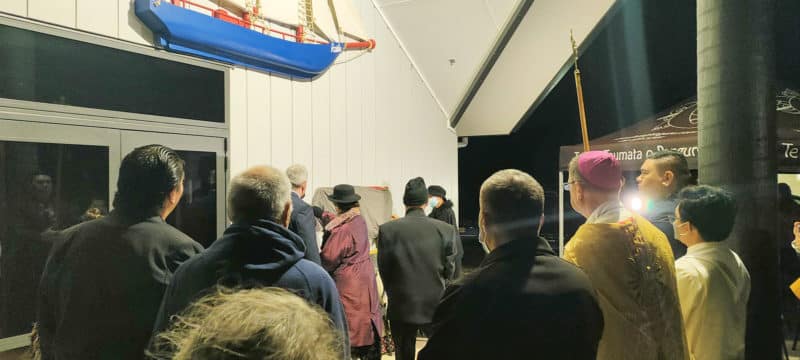by ALEXIA JACOBS and WIGA AUTET
Saturday, April 23, in Motuti, Hokianga, saw the opening at a dawn ceremony of the Raiātea Resource and Archive Centre, located by the Tamatea Marae.
After eight years of hard work, commitment, aroha, and the generosity of many, and after overcoming many hurdles and stumbling blocks (Covid-19, just to mention the most obvious), this has become a reality. It is the first and only hapū-owned and operated museum, research and learning centre in this country. A team appointed by the late Pā Henare Tate reportedly brought the project to fruition.
Raiātea houses over 10,000 items showcasing the history of the Hokianga and of the Te Tai Tokerau/ Northland. It also documents the beginnings of the Catholic faith in Aotearoa/ New Zealand, displaying a fine and rare collection of Māori and Catholic artefacts, manuscripts, sacred items, chalices, vestments, sculptures, photos, and ornaments — some of which date to Bishop Pompallier’s arrival to Hokianga in 1838. The aim of the centre is to make these treasures widely accessible to local whānau and the wider community, and to facilitate studying and learning about local whānau and/or an individual’s history and whakapapa.
Raiātea is a physical space where the treasures, memories and connections originated from meetings, relationships, conversations, work, events of life — are held and strengthened by the tāonga. Once gathered, they can be then further studied, documented, and cherished.
The Te Ao Maori News website reported that, in 2019, then Associate Arts, Culture and Heritage Minister Grant Robertson agreed to grant $300,000 to Motutī Marae Trust for the Raiātea Whare Taonga Resource and Archive Centre project.
Later in the morning on April 23, the Tamatea Marae was jam-packed with the whānau and manuhiri for the Miha hura kōhatu whakamaumahara/the Mass for the unveiling of Pā Henare Arekātera Tate.
It was noted that Bishop Pompallier had wished to learn about the Māori experience of God, and how he wanted to bridge that to the Catholic faith.
“Faith is calling us to be the best as who we are — Māori, Pākeha, Filipino, Tongan, and others. Our culture shines through us as we are being called to the wholeness and holiness,” said Bishop Stephen Lowe. The last part of the unveiling / hura kōhatu took place at the urupa/cemetery by Hāta Maria church.
(Alexia Jacobs ngā Kaihoe o Raiātea, Motuti, and Wiga Autet, Faith Formation Coordinator for Northland, Diocese of Auckland)

Reader Interactions